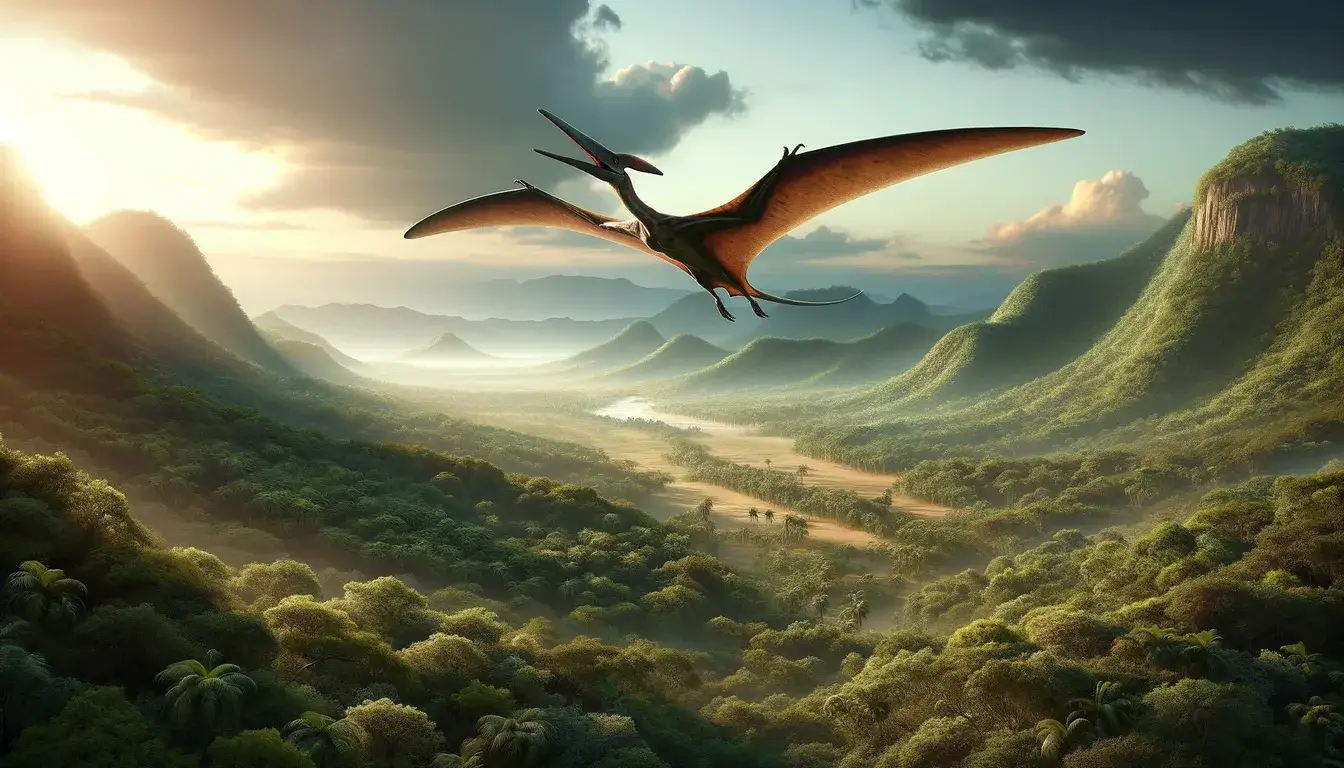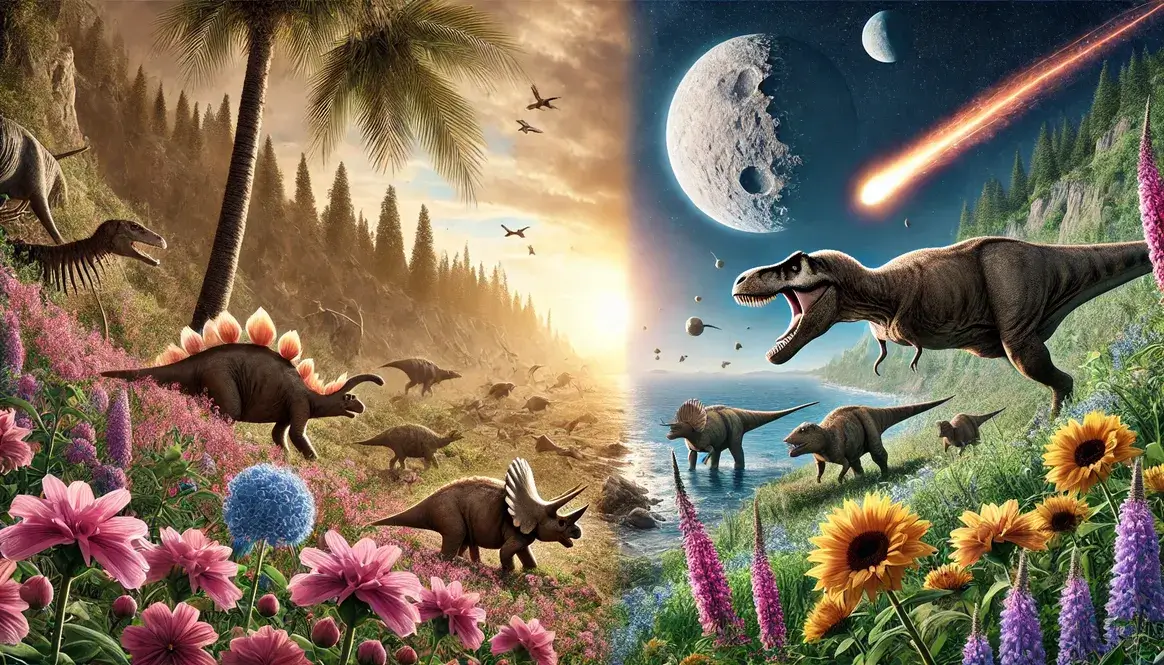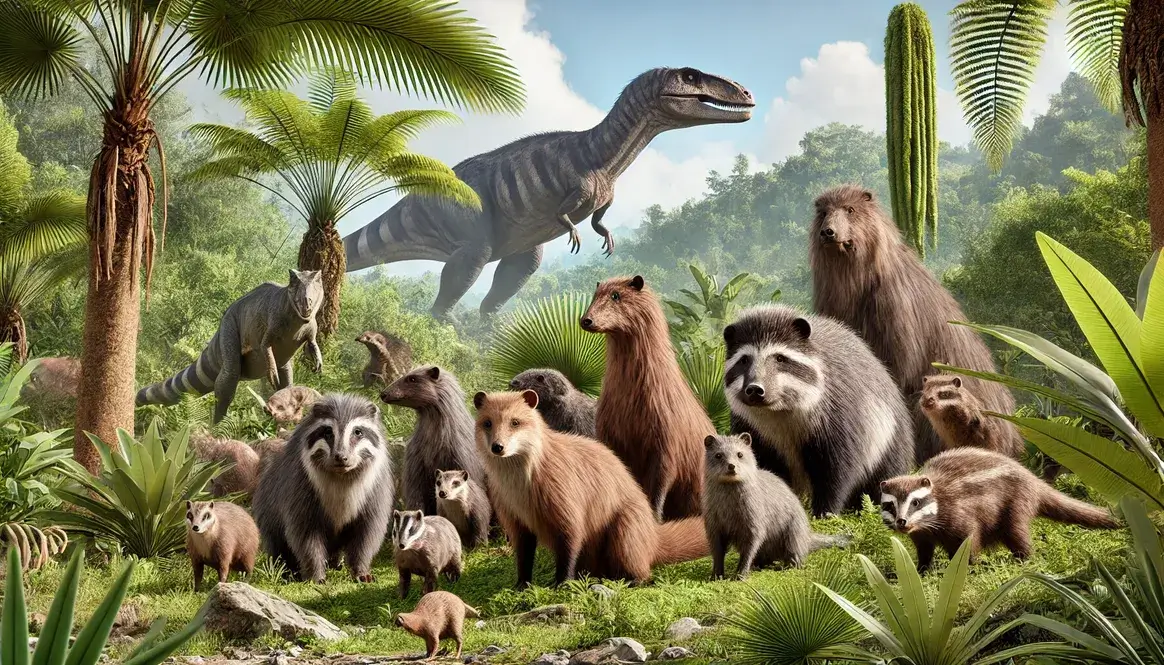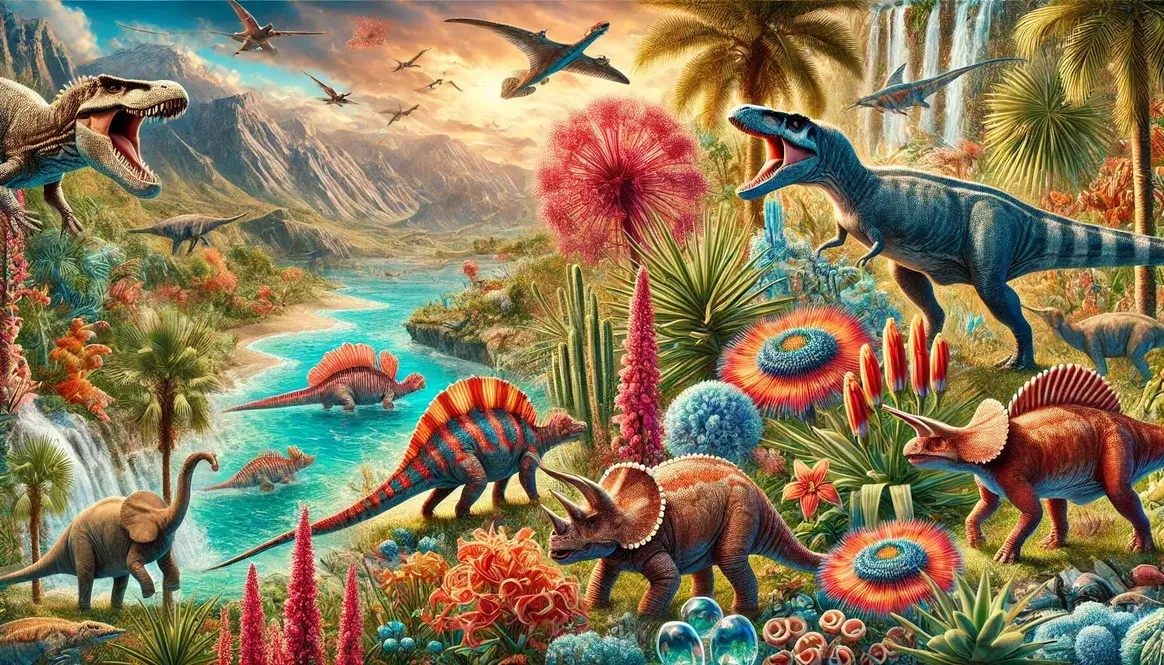Picture this: you’re walking through a lush, Cretaceous landscape. Suddenly, a shadow passes overhead. You look up and see a creature with wings stretching over 30 feet across soaring through the sky. This is a pterosaur, one of the largest flying animals ever to exist.
Pterosaurs were a group of flying reptiles that lived during the Mesozoic Era, alongside the dinosaurs. They first appeared in the Late Triassic, about 228 million years ago, and went extinct at the end of the Cretaceous, 66 million years ago.
While pterosaurs came in many shapes and sizes, some of the largest and most impressive species lived during the Cretaceous Period, from 145 to 66 million years ago. In this article, we’ll meet some of these Cretaceous giants and explore what made them so remarkable.
Pterosaur Profiles
Now, let’s meet some of the most remarkable pterosaurs that soared through the Cretaceous skies.
Quetzalcoatlus

Name and Meaning
Quetzalcoatlus (pronounced “kwet-zal-ko-AT-lus”) is named after the Aztec feathered serpent god Quetzalcoatl. The name means “feathered serpent god” in the Nahuatl language.
Discovery and Fossils
Quetzalcoatlus was first discovered in Texas in the 1970s. The fossils were fragmentary, but included impressive finds like:
- Neck vertebrae over 3 feet (1 meter) long
- A partial skull
- Limb bones suggesting a huge wingspan
Physical Characteristics
Quetzalcoatlus was a true giant among pterosaurs and all flying animals. It had:
- A wingspan of up to 36 feet (11 meters), as long as a small plane
- A height of over 18 feet (5.5 meters) when standing on the ground
- Hollow, lightweight bones
- A long, slender neck and a large, toothless beak
Despite its huge size, Quetzalcoatlus was lightly built, an adaptation for flight.
Habitat and Distribution
Quetzalcoatlus lived in what is now North America during the Late Cretaceous, about 68 to 66 million years ago. Its fossils suggest it inhabited a variety of environments, including:
- Forests
- Coasts
- Inland waterways
Behavior and Lifestyle
How did Quetzalcoatlus fly? Scientists think it used a combination of soaring and flapping, like modern large birds such as condors and storks. It may have taken off by leaping into the air with its strong hind limbs.
As for feeding, there are a few possibilities:
- It may have snatched fish, small reptiles, and even baby dinosaurs with its long beak.
- It could have been a scavenger, using its size to intimidate other predators and access carcasses.
- A combination of hunting and scavenging is also possible.
Fun Fact: If Quetzalcoatlus was alive today, its wingspan would make it wider than a soccer goal!
Pteranodon
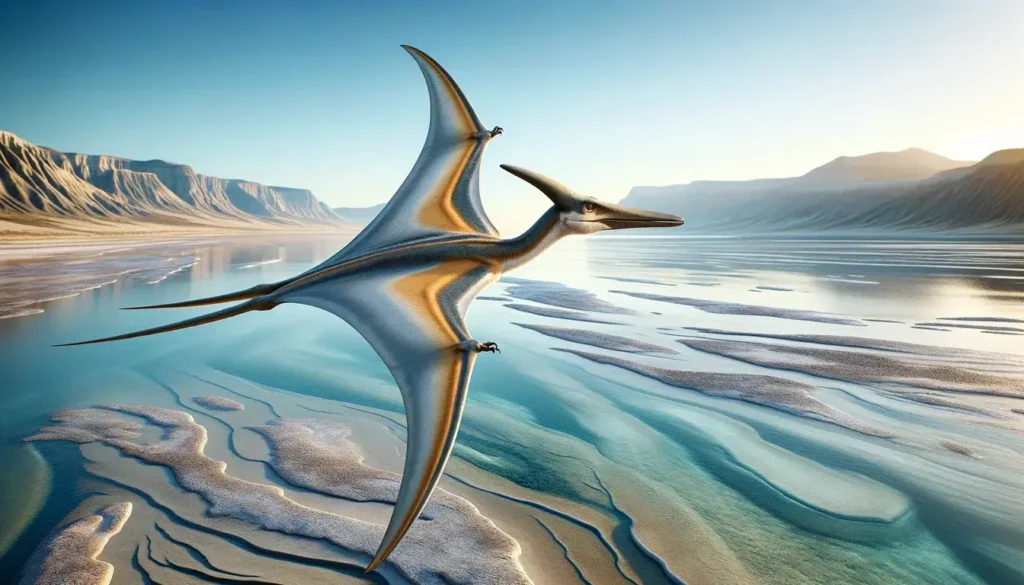
Name and Meaning
Pteranodon, pronounced “ter-AN-oh-don”, means “toothless wing” in Greek, referring to its large wings and lack of teeth.
Discovery and Fossils
Pteranodon was one of the first pterosaurs found in North America, with fossils discovered in the 1870s in Kansas. The Smoky Hill Chalk deposits where it was found date back to the Late Cretaceous.
Physical Characteristics
Pteranodon was large, but not quite as gigantic as Quetzalcoatlus. It had:
- A wingspan up to 20 feet (6 meters)
- A long, backward-pointing crest on its skull, likely for display
- Narrow, toothless jaws adapted for catching fish
The crest is the most distinctive feature of Pteranodon. It may have been brightly colored in life.
Habitat and Distribution
Pteranodon soared over the shallow seas of what is now central and western North America during the Late Cretaceous, about 86 to 84.5 million years ago.
Behavior and Lifestyle
Pteranodon was built for fishing, with:
- Long, narrow wings for soaring over the ocean
- A streamlined body and head
- A slender, toothless beak for snatching fish
It may have behaved like modern seabirds, nesting in colonies on cliffs and islands. The crest was likely used in mating displays.
Tapejara
Name and Meaning
Tapejara (pronounced “ta-peh-HA-ra”) comes from the Tupi-Guarani word for “the old being”, referring to an ancient, mythical creature in Brazilian folklore.
Discovery and Fossils
Tapejara was discovered much more recently than Quetzalcoatlus and Pteranodon. It was found in Brazil in 1989, in rocks dating back about 108 million years to the Early Cretaceous. Several well-preserved fossils have been found, including:
- Complete skulls
- Partial skeletons
Physical Characteristics
Tapejara was medium-sized for a pterosaur, with:
- A wingspan of about 13 feet (4 meters)
- A large, sail-like crest on its head with a curved front margin and pointed tip
- A short, toothless beak
The crest of Tapejara is its most notable feature, and is different from the crests of pterosaurs like Pteranodon.
Habitat and Distribution
During the Early Cretaceous, Tapejara inhabited what is now northeastern Brazil. This region was:
- Tropical
- Forested
- Rich in rivers and lakes
Behavior and Lifestyle
Scientists have debated the purpose of Tapejara’s large crest:
- It may have acted as a rudder for quick aerial turns.
- It could have been for display, used in territorial behavior.
- It may have helped Tapejara locate fruit-bearing trees in dense forests.
Tapejara’s short, toothless beak suggests it ate soft foods like fruit or insects, rather than fish or meat.
The Cretaceous World
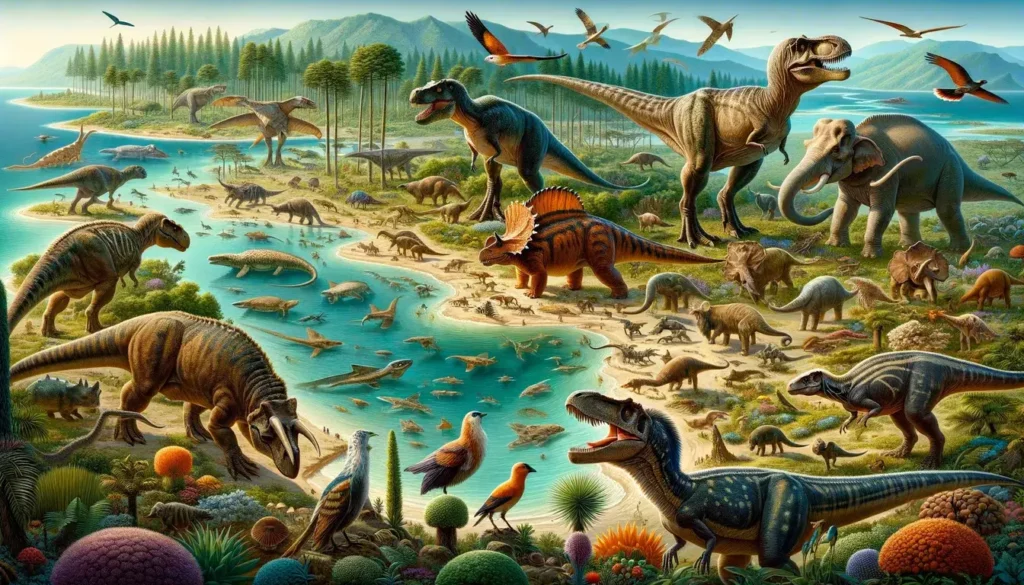
The Cretaceous Period, spanning from 145 to 66 million years ago, was a time of great change on Earth. Here’s what the world looked like during this fascinating time.
Climate
The Cretaceous was generally warm, with high sea levels and no polar ice caps. However, the climate varied over the course of the period:
- Early Cretaceous: Warm and humid, with average temperatures around 18°C (64°F).
- Mid-Cretaceous: A global warming event occurred, with temperatures rising by 4-5°C (7-9°F).
- Late Cretaceous: Cooler and drier, but still warmer than today.
Geography
The continents were in different positions during the Cretaceous, and much of what is now dry land was underwater. Some key geographic features included:
- A large ocean called the Western Interior Seaway split North America in two.
- South America and Africa were still connected, but gradually separating.
- India was an island continent, not yet connected to Asia.
- A warm, shallow sea covered much of Europe.
These geographic changes influenced the evolution and distribution of Cretaceous life, including pterosaurs.
Iconic Dinosaurs and Other Animals
Pterosaurs shared the skies, land, and seas with a variety of other remarkable creatures during the Cretaceous:
- Tyrannosaurus rex, the famous giant predatory dinosaur.
- Triceratops, a large, horned herbivorous dinosaur.
- Velociraptor, a small, intelligent predatory dinosaur.
- Mosasaurs, giant marine reptiles up to 50 feet long.
- Elasmosaurs, long-necked marine reptiles reaching 46 feet.
- The first birds, like Confuciusornis and Ichthyornis.
- Early mammals, though most were still small at this time.
- A diversity of fish, insects, and plants, including flowering plants.
Fun fact: The largest dinosaurs, such as Argentinosaurus and Patagotitan, also lived during the Cretaceous. Some may have weighed over 80 tons!
Conclusion
From the gigantic Quetzalcoatlus to the crested Tapejara, the pterosaurs of the Cretaceous were a remarkable bunch. They showcase the incredible variety of adaptations that evolved among flying reptiles in the Mesozoic.
Though pterosaurs went extinct at the end of the Cretaceous alongside the dinosaurs, their fossils continue to fascinate and inspire. They give us a glimpse into a time when the skies were ruled by giants.
The Cretaceous may be ancient history, but its stories and creatures continue to captivate us. As we learn more about pterosaurs and their world, we gain not just scientific knowledge, but a deeper appreciation for the marvelous twists and turns of life’s history on this ever-changing planet.

